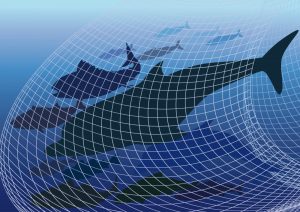
The U.S. House of Representatives on Dec. 10 voted 283-105 to approve a bipartisan bill introduced by U.S. Sen. Shelley Moore Capito (R-WV) to end large mesh drift gillnet fishing, which unavoidably entangles, kills or severely injures many endangered, protected marine species.
The Driftnet Modernization and Bycatch Reduction Act, S. 906, which Sen. Capito cosponsored in March 2019 with bill sponsor U.S. Sen. Dianne Feinstein (D-CA), had already received U.S. Senate approval in July and now heads to the president’s desk to be signed into law.
“I’m thrilled this legislation has now passed the House and look forward to the president signing this into law,” Sen. Capito said.
The larger mesh drift gillnets, which are between a mile and a mile and a half long and can extend 200 feet below the ocean surface, are only used in federal waters off the California coast. They are banned in the U.S. territorial waters of the Atlantic Ocean and the Gulf of Mexico, as well as off the coasts of Washington, Oregon, Alaska, and Hawaii.
“While the use of large mesh drift gillnets is already prohibited off the coasts of most states, these tools are still injuring or killing a whole host of marine animals off California’s coast,” said Sen. Capito. “These driftnets are left in the ocean overnight to catch swordfish and thresher sharks. However, at least 60 other marine species, such as seals and turtles, can also become entangled in these nets, injuring or killing them.”
The bill expands the definition of large-scale driftnet fishing to prohibit the use of gillnets with a mesh size of 14 inches or greater, according to the congressional record bill summary, which notes that the expanded prohibition does not apply within the U.S. exclusive economic zone for five years.
The bill also requires that the U.S. Department of Commerce conduct a transition program to facilitate the phase-out of large-scale driftnet fishing and to promote the adoption of alternative fishing practices that minimize the incidental catch of living marine resources, according to the summary.



